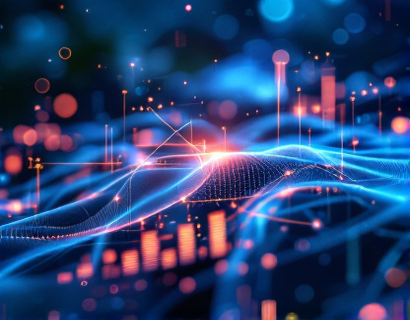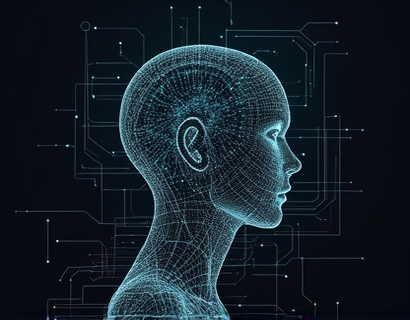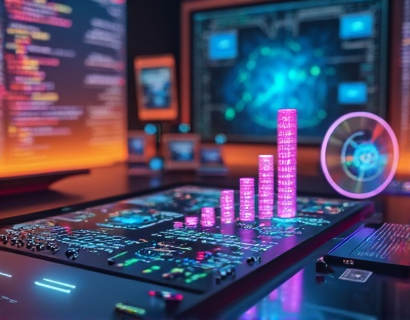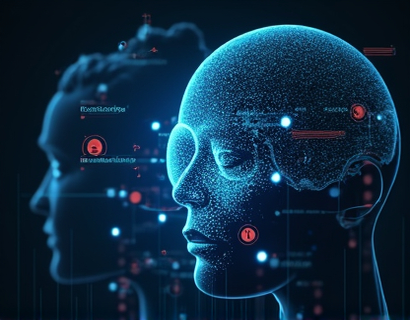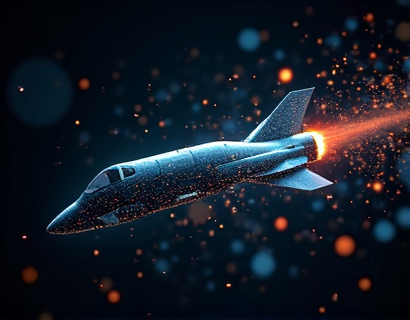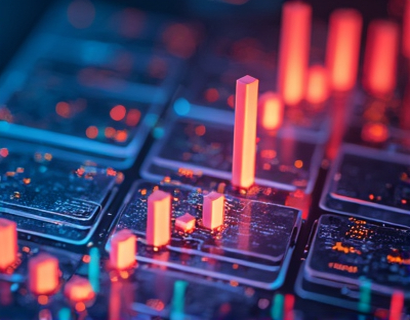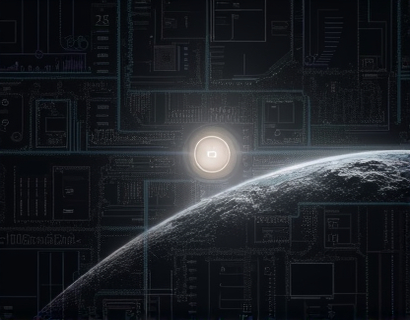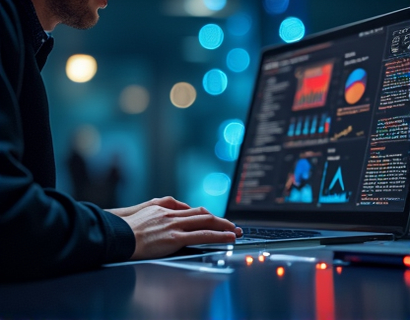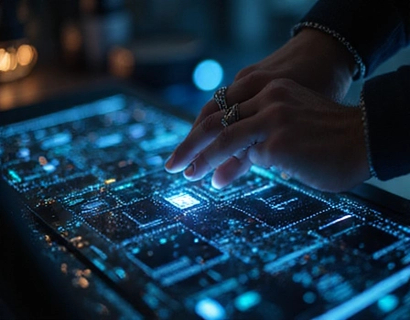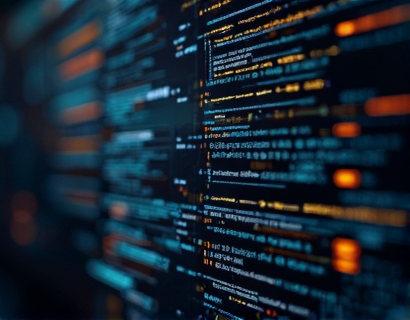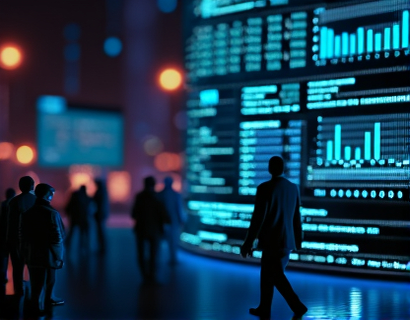AI and Crypto Convergence: Unlocking New Frontiers in Finance and Technology
The intersection of artificial intelligence (AI) and cryptocurrency is a rapidly evolving domain that promises to redefine the future of finance and technology. This comprehensive guide delves into the profound impact of AI on the crypto space, exploring how these two revolutionary fields are converging to unlock unprecedented opportunities. Whether you are a tech enthusiast, a seasoned professional, or simply curious about the future of digital currencies and intelligent systems, this article provides deep insights, valuable resources, and a thriving community to explore this intersection.
Understanding the Basics
To fully appreciate the convergence of AI and cryptocurrency, it's essential to understand the fundamental concepts of both fields.
Artificial Intelligence refers to the simulation of human intelligence processes by machines, particularly computer systems. These processes include learning (the acquisition of information and rules for using it), reasoning (using rules to reach approximate or definite conclusions), and self-correction. AI technologies encompass a wide range of applications, from machine learning and natural language processing to robotics and computer vision.
Cryptocurrency, on the other hand, is a digital or virtual currency that uses cryptography for security. It operates on a decentralized network, typically a blockchain, which is a distributed ledger technology that records transactions across multiple computers. The most well-known cryptocurrency is Bitcoin, but there are thousands of others, each with unique features and use cases.
The convergence of AI and cryptocurrency occurs where AI technologies are applied to enhance, manage, or analyze blockchain-based systems and cryptocurrencies. This convergence is driving innovation in areas such as security, trading, and smart contracts.
Enhancing Security with AI
One of the most significant benefits of AI in the crypto space is its ability to enhance security. Blockchain, while inherently secure, is not immune to attacks. AI can detect and mitigate various types of threats, including 51% attacks, smart contract vulnerabilities, and phishing attempts.
Machine learning algorithms can analyze patterns in transaction data to identify anomalies that may indicate malicious activity. For instance, AI can monitor blockchain networks in real-time, flagging suspicious behavior and automatically triggering security protocols. This proactive approach to security is crucial in a space where the stakes are high and the potential for loss is significant.
Moreover, AI can improve the security of private keys and wallet management. Biometric authentication, powered by AI, can provide a more secure and convenient way to access crypto assets. Voice recognition, facial recognition, and even behavioral biometrics are being integrated into crypto wallets to ensure that only authorized users can access sensitive information.
Optimizing Trading Strategies with AI
The trading landscape in the crypto market is highly volatile and complex. AI is revolutionizing this area by providing sophisticated tools that can analyze vast amounts of data, identify trends, and make informed trading decisions.
Algorithmic trading, powered by AI, uses algorithms to execute trades based on predefined criteria. These algorithms can process multiple data sources, including market news, social media sentiment, and historical price data, to predict market movements. AI-driven trading bots can operate 24/7, capitalizing on opportunities that human traders might miss due to time constraints or emotional biases.
Additionally, AI can enhance risk management in crypto trading. By analyzing market conditions and historical data, AI models can assess risk levels and suggest optimal position sizes and stop-loss levels. This data-driven approach helps traders make more informed decisions, reducing the likelihood of significant losses.
Smart Contracts and AI
Smart contracts are self-executing contracts with the terms of the agreement directly written into code. They run on blockchain networks and automatically enforce and execute the terms of the contract when predefined conditions are met. AI can significantly enhance the functionality and efficiency of smart contracts.
AI can be used to write more complex and adaptive smart contracts. For example, machine learning algorithms can analyze real-time data and adjust the parameters of a smart contract dynamically. This adaptability is particularly useful in decentralized finance (DeFi) applications, where smart contracts manage lending, borrowing, and other financial services.
Moreover, AI can help in the auditing and verification of smart contracts. By analyzing the code and identifying potential vulnerabilities, AI tools can ensure that smart contracts are secure and function as intended. This is crucial in a space where the integrity of code can have significant financial implications.
Tokenomics and AI
Tokenomics, the study of the supply, distribution, and economics of tokens in a blockchain ecosystem, is another area where AI can provide valuable insights. AI can analyze token usage patterns, predict market behavior, and optimize token distribution strategies.
For instance, AI can help in designing token economies that incentivize desired behaviors within a decentralized application (dApp). By analyzing user interactions and market dynamics, AI can suggest adjustments to token rewards, staking mechanisms, and other economic parameters to enhance the overall health and growth of the ecosystem.
Furthermore, AI can assist in the creation of new tokens by analyzing existing token models and identifying successful patterns. This can help developers design tokens that are more likely to thrive in the market, based on data-driven insights rather than guesswork.
Challenges and Considerations
While the convergence of AI and cryptocurrency offers numerous benefits, it also presents several challenges that must be addressed.
One of the primary concerns is the regulatory landscape. The use of AI in the crypto space can raise regulatory questions, especially regarding data privacy, anti-money laundering (AML), and know-your-customer (KYC) compliance. As AI systems become more integrated into crypto operations, regulators will need to develop frameworks that balance innovation with consumer protection.
Another challenge is the computational resources required for AI algorithms, particularly those involving deep learning. Blockchain networks, especially those using proof-of-work (PoW) consensus mechanisms, consume significant energy. Integrating AI with blockchain can further increase energy consumption, raising environmental concerns. Developing more efficient AI models and exploring alternative consensus mechanisms, such as proof-of-stake (PoS), can help mitigate these issues.
Additionally, the complexity of AI models can make them less transparent and harder to audit. This lack of transparency can be a concern in a space that values openness and decentralization. Efforts to create more explainable AI (XAI) models can help address this issue, making AI-driven solutions more trustworthy and accessible.
The Future of AI and Crypto
The future of AI and cryptocurrency is bright, with numerous potential developments on the horizon. As AI technologies continue to advance, we can expect even more sophisticated applications in the crypto space.
One exciting area is the integration of AI with decentralized autonomous organizations (DAOs). DAOs are community-driven organizations governed by smart contracts. AI can enhance the decision-making processes within DAOs by analyzing member preferences, predicting outcomes, and suggesting governance changes. This can lead to more efficient and responsive decentralized organizations.
Another promising development is the use of AI in cross-chain interoperability. As the crypto ecosystem grows, the need for seamless interaction between different blockchain networks becomes increasingly important. AI can play a crucial role in developing protocols that enable smooth and secure cross-chain transactions, fostering a more interconnected and efficient blockchain landscape.
Furthermore, the rise of AI-powered crypto assistants and personal finance managers can democratize access to advanced financial tools. These AI-driven applications can provide personalized investment advice, automate trading, and manage crypto portfolios, making the crypto space more accessible to a broader audience.
Conclusion
The convergence of AI and cryptocurrency is a transformative force that is reshaping the future of finance and technology. By enhancing security, optimizing trading strategies, improving smart contracts, and providing new insights into tokenomics, AI is unlocking new frontiers in this dynamic field. While challenges exist, the potential benefits are immense, offering a glimpse into a more secure, efficient, and innovative financial ecosystem.
For those eager to explore this intersection, there is a thriving community of tech-savvy innovators and enthusiasts. Engaging with forums, attending conferences, and participating in online discussions can provide valuable resources and networking opportunities. Together, we can continue to push the boundaries of what is possible at the intersection of AI and cryptocurrency.




